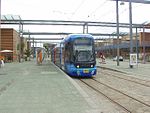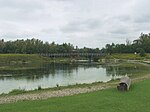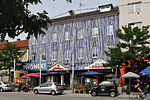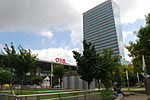Voestalpine
Voestalpine AG – stylized as voestalpine – is an Austrian steel-based technology and capital goods group based in Linz, Austria. The company is active in steel, automotive, railway systems, profilform and tool steel industries. As of 2017, it is one of the few profitable steel companies in Europe.45 percent of its workforce is based in Austria. The Linz hot strip mill is a "fully integrated steel works" operated by voestalpine Stahl GmbH, a part of the steel division of voestalpine AG. In addition to Linz the most important plants are in Leoben in Styria and in Krems in Lower Austria. It had a large plant at Liezen in Styria which closed in the 1990s. Voestalpine is responsible for 10% of all Austrian CO2 emissions, which makes it the biggest emitter in the country.The name of the company amalgamates its two principal components, the VÖEST (Vereinigte Österreichische Eisen und Stahlwerke) in Upper Austria, established through nationalization in July 1946, and the ÖAMG (Österreichische-Alpine Montangesellschaft) in Styria, established in 1881.
Excerpt from the Wikipedia article Voestalpine (License: CC BY-SA 3.0, Authors).Voestalpine
Ofenbaustraße, Linz Industriegebiet-Hafen
Geographical coordinates (GPS) Address Nearby Places Show on map
Geographical coordinates (GPS)
| Latitude | Longitude |
|---|---|
| N 48.273888888889 ° | E 14.333333333333 ° |
Address
SG37
Ofenbaustraße 1
4020 Linz, Industriegebiet-Hafen
Upper Austria, Austria
Open on Google Maps











